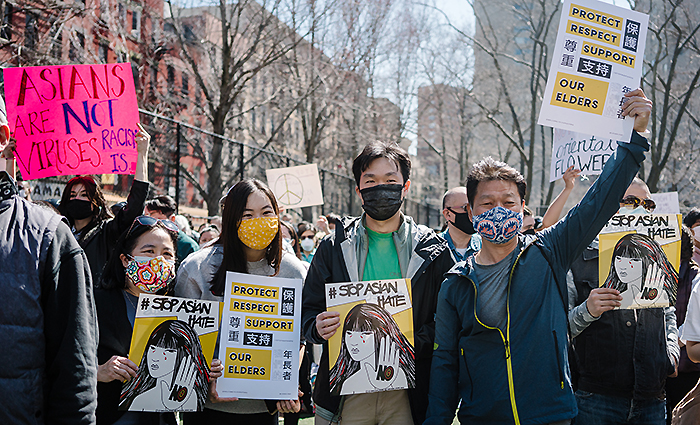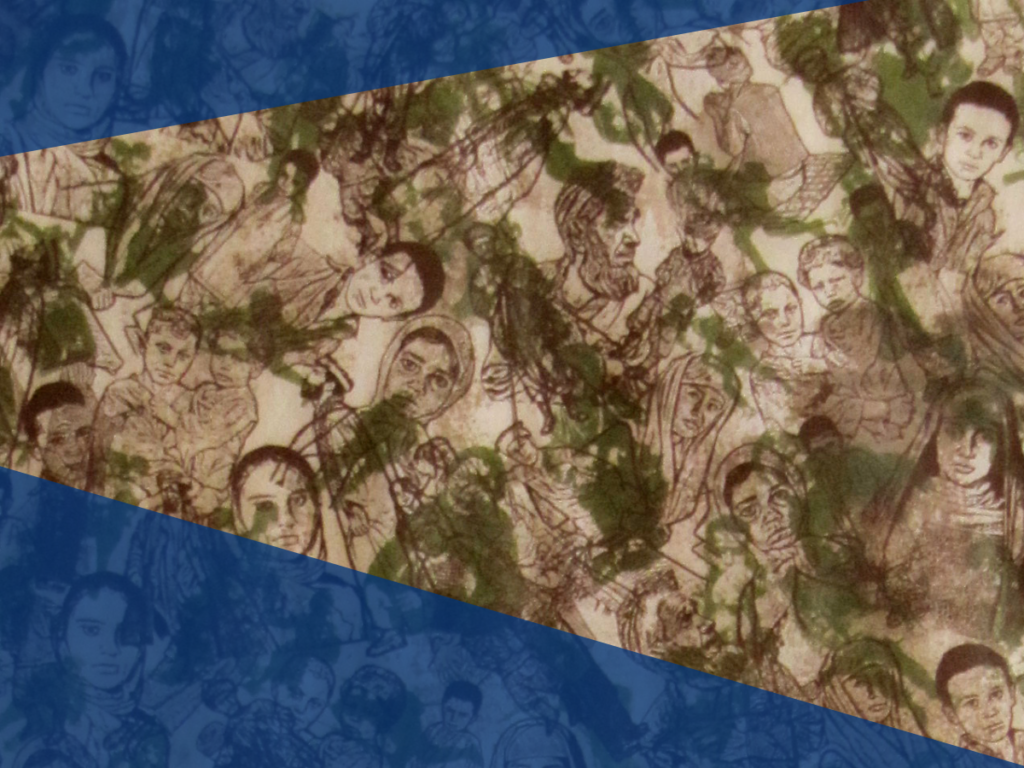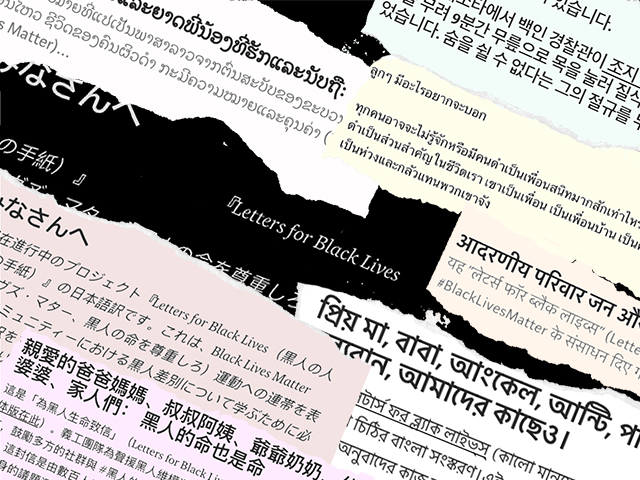What can we do to stop hate and protect our communities?

June 28, 2021
Hate has no place here. New York man charged with hate crime in Asian American attack that bystanders watched without helping.
Hate has no place here. Victim of Anti-Asian Harassment in Subway Says No One Helped Except Homeless Man.
Hate has no place here. Asian woman spat on, assaulted in Manhattan hate crime.
Hate has no place here. Maybe if I keep repeating it, it will sound true.
For many first-generation Americans, New York is a symbol of hope. The city has become home to diasporas from around the world and created a sense of belonging for the children of immigrants. Growing up, we read about hate crimes in other states and slid into comfort thinking, “That would never happen here.”
Only we were wrong.
So what?
Our communities are in crisis but no one is talking. That is probably because if you google median household income by race, you will see Asian Americans at the top of the list. However, this does not paint the complete picture of our communities in America. While there are some high-earning Asian American individuals, there are also Asian and Pacific Islander communities that have a long history of poverty in New York.
In 2018, the highest poverty rates among Asians in New York City by ethnic group were Pakistani (28 percent), Bangladeshi (27 percent), Arab (26 percent), and Chinese (22 percent). The Asian American Federation, a social services nonprofit, recently released a report looking into the impact of COVID-19 on unemployment in the community. The report stated that at the beginning of the pandemic in February 2020, Asian Americans in New York City had a jobless rate of 3.4 percent. By May 2020, the rate had surged to 25.6 percent, the largest increase among all major racial groups.
The model minority myth hides the economic realities of many Asian Americans and has led to the deprioritization of these communities by policymakers. It does not tell the stories of the unemployed, those in low-income housing or mothers waiting for their WIC checks.
Mahfuzul Islam is a former candidate for NY State Assembly District 24 and tenant organizer at Chhaya, a community development organization that was created to address the housing and economic needs for low-income South Asian and Indo-Caribbean New Yorkers. When asked how the COVID-19 pandemic exacerbated the current conditions of New Yorkers, Mahfuzul said:
“The challenges are mainly in the lack of exposure to resources that already exist in the community and the language barriers these populations face while navigating state and local institutions. It is our responsibility, as the kids who speak both languages, to walk them through applications and connect them with resources on and offline.”
How did we get here?
According to the Center on the Legal Profession at Harvard Law School, the “model minority” term refers to a minority group perceived as particularly successful, especially in a manner that contrasts with other minority groups. The label on its surface seems to be an accolade to praise Asian Americans for their achievements.
It is important to look at the history of immigration, though. Asian immigrants were initially brought to America as alternative labor to the recently freed slaves.
As the Atlantic slave trade came to an end, the railroad barons came looking for workers on the Central Pacific Railroad. Irishmen were the first choice but when the Irish agitated for higher wages, management brought in Chinese laborers, who would work for less. Soon, the Chinese immigrants were 80 percent of the workforce. The same pattern followed in industries such as sugar plantations and mining.
Finally in 1965, the new Immigration Act allowed previously banned Asians with certain familial, educational and professional backgrounds to immigrate to the U.S., not solely as laborers but as immigrants with hope. It is this cherry-picked group of Asian Americans, and their children, that make up a significant portion of the so-called model minority in the U.S. today.

What can we do together?
It’s not enough to feel stumped every time we read an article right before bed or hear a racial slur as we’re speeding through Port Authority. We need to pause and take care of ourselves first, so we preserve the energy required to help our community.
To do, we must first be. Start at home, invest in your mental health, indulge in self-care, surround yourself with company that brings you joy. Then, find ways to integrate yourself into the community because we are stronger together.
Here are simple things we can do to protect our communities:
1. Amplify marginalized voices
The Asian American community is made up of many different cultures. On May 23, Send Chinatown Love tweeted: “Chinatown is not a monolith! There are cultural and socioeconomic divides within the diverse Chinatown communities that our generation needs to acknowledge in order to heal.”
Send Chinatown Love is a New York based, entirely volunteer-run organization whose goal is to provide relief to small, immigrant-owned, Chinatown businesses impacted by the effects of COVID-19. Recognizing the many different communities that make up Asian Americans in NYC is the first step in acknowledging that unique socioeconomic, cultural, language barriers often lead to negative stereotypes and discrimination within one’s own community. The truth is, we cannot let archaic colonialist biases dictate who is worthy of respect and further drive a wedge between us minorities.
Must we not join forces to come together and advocate at every table we get a seat at? Not only should we center the marginalized in our own communities, we must also amplify the voices of our Black, Brown and Indigenous brothers and sisters.
2. Vigorously forge COVID-19-related mutual aid
“When we first started Send Chinatown Love, all of us had day jobs and we did not think we would be able to make tangible change. But when we came together, we were surprised at the impact we created.” says Marcia Hu, merchant experience lead of Send Chinatown Love.. By May of 2021, they had already helped 36 small businesses and collected more than $600,000 in donations. One of their programs, Gift-A-Meal, created impact beyond Asian communities. In Flushing, Black, Brown, and immigrant communities have faced devastating loss and food insecurity due to unemployment and unequal access to resources and government assistance. To help alleviate the demand on existing food pantries, Send Chinatown Love is partnering with La Jornada and NY Go Go to deliver meals directly inside the Bland Houses, an affordable housing project in Downtown Flushing.

“I think the reason people of color are labeled as “the other” in American society is because our stories aren’t told. And if our stories were told, they were not told by us. We are not the main characters of our own stories.” says Jonathan Bach, who co-founded Asian Archives with Fanny Sun in February of 2021.
Asian Archives is a visual storytelling platform that explores AAPI life in America and around the world. During the AAPI Heritage Month, Sun emphasizes the focus was to celebrate the everyday lives of Asian Americans and give voice to those who cannot share their story. If you are interested in sharing, you can still submit a memory here.
4. Donate
If you are juggling five different things right now and don’t have the time to volunteer or start something of your own, donate! Support NYC-based organizations that are active on the ground in Asian, South Asian, and Pacific Islander communities.
Here are some organizations accepting donations:
Heart of Dinner: Delivers care packages to Asian elders in NYC.
Mekong: Improves the quality of life of the Southeast Asian community in the Bronx and throughout New York City by achieving equity through community organizing and healing, promoting arts, culture, and language, and creating a safety net by improving access to essential social services.
Chhaya: Founded in 2000, Chhaya is a community development corporation[2] [3] with the mission to build the power, housing stability, and economic well-being of South Asian and Indo-Caribbean communities.
Send Chinatown Love: This crowdfunding platform donates 100 percent of its proceeds to cash-only, Asian-owned small businesses that have been disproportionately impacted by COVID-19.
5. Learn more
Our journey to equitable social justice does not end with exiting out of this browser; let’s continue the conversation in our communities. Let’s discover what organizations on the ground are already doing and hey, if it sounds like something you would be interested in – reach out! Maybe you create a TikTok for a restaurant in your neighborhood or help a grocery store design a website. You may even have a unique skill set that no one else in your community does, lean into it and uplift others.
Here are examples of work from organizations that you might be interested in sharing your talent with:
The Impact of COVID-19 on Asian American Employment in NYC by Asian American Federation
Anti-Asian Racism Data by the Movement Hub
For many first-generation Americans, New York is a symbol of hope.
Hate simply cannot have a place here.



